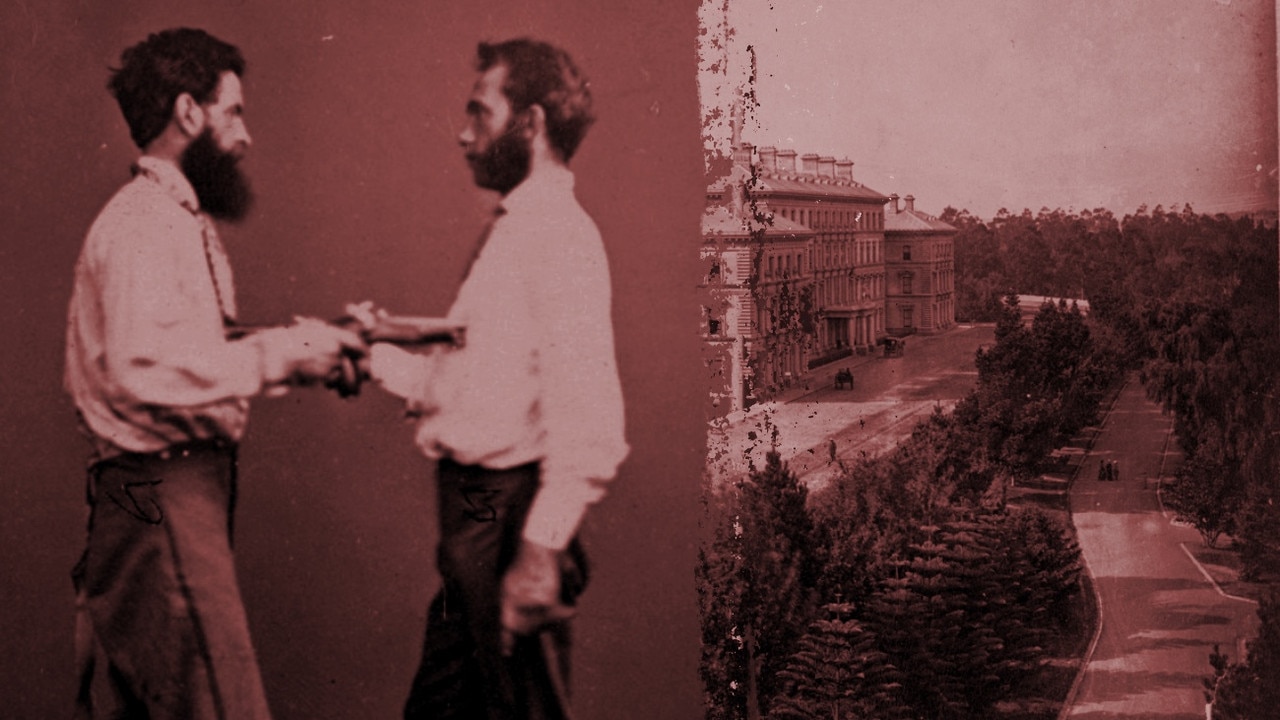Early Melbourne: the sites that shaped the city’s history
THE Yarra River once had a waterfall and the first pub was a tiny shack that served river water to its customers. Take a look at the city’s significant sites.
Melbourne
Don't miss out on the headlines from Melbourne . Followed categories will be added to My News.
MELBOURNE has come a long way in the past 150 years, developing from a crude riverside settlement into the world’s most liveable city.
Modern buildings have — on the most part — taken the place of Melbourne’s earliest structures, such as founder John Batman’s house which is now Southern Cross Station.
Some buildings still stand like the stunning Old Customs building which now houses the city’s Immigration Museum.
And the Yarra River once had a waterfall where Queen’s Bridge now sits.
Take a look back at how Melbourne was when our founding fathers started building a city in a swamp.
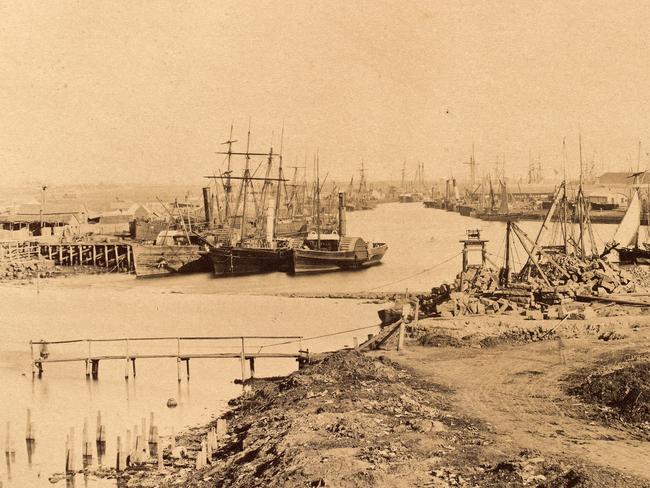
The Yarra Falls — a natural rock barrier that made way for Queen’s Bridge.
Believe it or not, there was once a waterfall in the middle of Melbourne where Queen’s Bridge now sits.
The falls provided a natural rock barrier that separated the salty tidal water from the freshwater which flows down from the Yarra Valley.
Convict labour was used in 1839 to construct a dam at the falls to sure up Melbourne’s freshwater supply — preventing salt water from flowing up over the falls during high tide.
But after a series of deadly floods, it was decided that the falls should be removed, as was reported in the The Argus newspaper in 1883.
“In 1879 Sir John Coode reported that the “falls” in the Yarra must be removed in order to prevent a repetition of the disastrous floods of 1863 and 1878.
“It was pointed out that the tidal flow of the Yarra is stopped by the barrier of rock capped by the artificial mound or dam which was placed thereon some years ago for the purpose of excluding the tide and impounding freshwater for the use of the city.”
The falls were blasted away by dynamite in 1880 to make way for Queen’s Bridge.


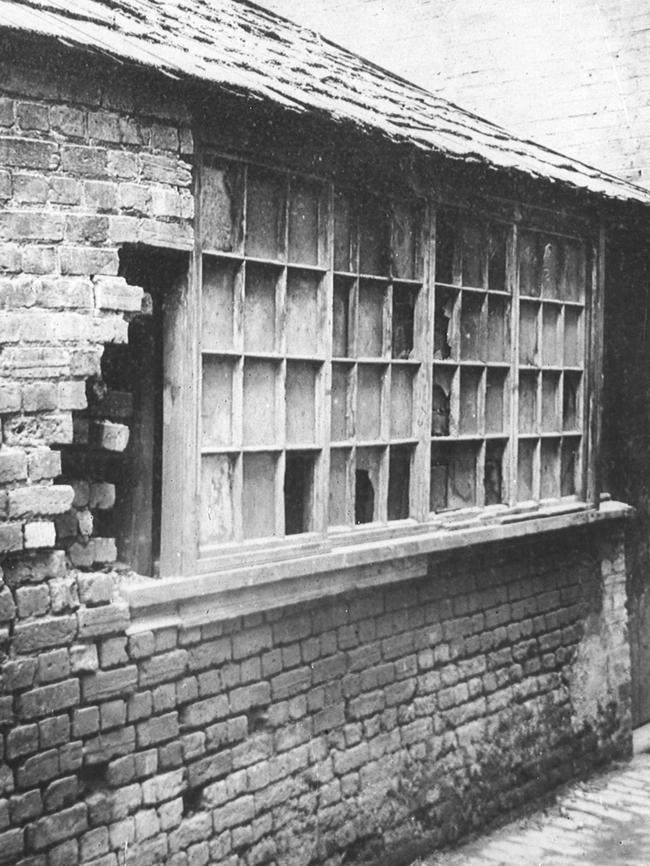
John Pascoe Fawkner’s hotel — corner of William St and Flinders Lane
It’s fitting that Melbourne’s first pub was opened by one of Melbourne’s first settlers, John Pascoe Fawkner.
Fawkner had been to Melbourne in 1803 as an eleven year old, living with his convict father in a colony established near where the town of Sorrento is today.
The colony was abandoned in 1804 due to lack of wood and freshwater, and the Fawkners moved to Hobart in Tasmania, Museum Victoria says.
Fawkner worked in his father’s bakery, timber business and brewery and in 1819, they moved to Launceston, where they set up a hotel, bakery, timber business, bookshop, nursery, orchard and a newspaper The Launceston Advertiser in 1829.
In April 1835, Fawkner bought a ship, the Enterprize, with the aim of returning to the mainland and establishing a settlement in the Port Phillip District.
The Enterprize left Tasmania in August without Fawkner, who stayed to settle debts in the Apple Isle before setting sail for Melbourne himself in October.
He set himself up as a businessman, opening Melbourne’s first hotel on the corner of William Street and Flinders Lane and publishing the first newspaper.
Museum Victoria says the hotel patrons used to complain his pub only offered bad rum and river water to drink, with nothing to eat and nowhere to sleep.
Despite this, John Pascoe Fawkner, became successful enough to go on to become Melbourne’s first newspaper owner and a well-known politician.

He published the Melbourne Advertiser on 1 January 1838 which was the district’s first newspaper and was elected to the first Legislative Council of the Port Phillip District in 1851.
Fawkner worked tirelessly for the separation of Victoria from New South Wales, which was achieved in 1851.

Fawkner had a huge impact on the early life Melbourne and 15,000 people watched his funeral procession, which consisted of over 200 carriages in 1869.

John and Eliza Batman’s house on Spencer Street.
A Melbourne founder, Batman was born in Parramatta in New South Wales in 1801 after his parents, William and Mary arrived in Sydney aboard a convict ship in 1797.
In 1821 John Batman went to Tasmania and took up land in the northeast near Ben Lomond as a grazier.
In March 1828 he married Eliza Thompson in Launceston and in 1835 they set sail for the mainland and explored much of Port Phillip before finding the current site of central Melbourne.
“This will be the place for a village,” Batman wrote in his diary.
He negotiated a treaty with the local indigenous people to “rent” their land on an annual basis for blankets, axes, knives, scissors other household items they would have had absolutely no use for.

John Batman built one of the first houses in Melbourne on Pleasant Hill, where Southern Cross station now stands. The house is a distant memory but there is a plaque on Spencer Street Bridge that commemorates the house of Melbourne’s founding father.
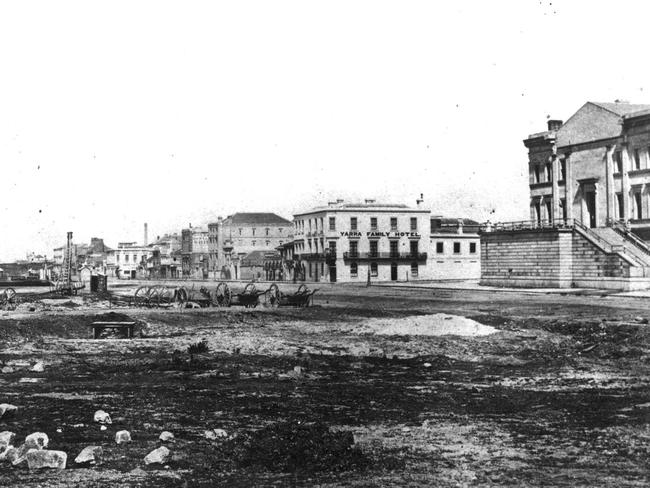
Customs House on Flinders St between William and Market streets
One of the most important Melbourne buildings of the 19th century, the original structure was described as a ‘shabby, leaky, comfortless, weatherboard cabin’ that was shipped in pieces from Sydney and erected during the 1830s, Museum Victoria says.
As trade increased, a two-storey bluestone Customs House was completed in 1841.
Designed by the Government architect in Sydney, it was Melbourne’s first stone building, but by the 1850s, critics called it one of the ‘ugliest and most inconvenient of all our public buildings’.
With the vast increase in revenue brought by the gold rush, the Victorian Government commissioned immigrant architect Peter Kerr to design a new Customs House.

Customs House officers recorded all goods entering or leaving Victoria, collecting customs taxes.
They also controlled immigration, recording every arrival to the city and administering a White Australia policy that excluded immigrants on the basis of their race.
Customs officers were also in charge of censorship, determining what material might offend mainstream social values.
The Customs House was converted to Commonwealth Parliamentary Offices in 1965 and then restored to its former glory to become the immigration museum in 1998, Heritage Council Victoria says.

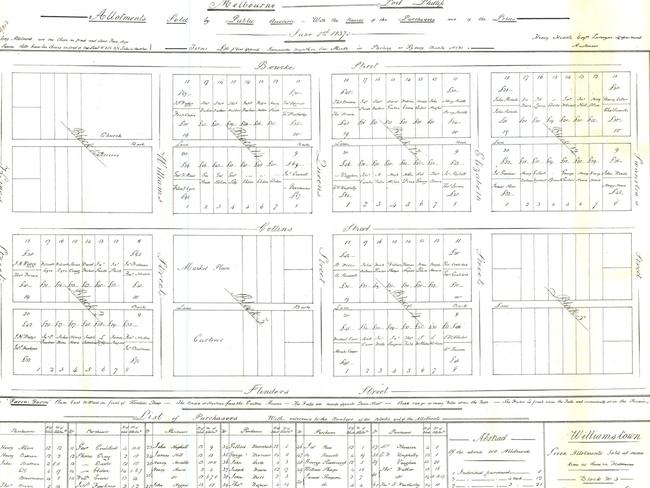
Site of city’s first land auction in 1837
After Robert Hoddle laid out a grid for Melbourne, he went about conducting the first land sales in June 1837.
John Pascoe Fawkner bought the first allotment of land at the south eastern corner of King and Flinders Streets for £32.
Before the survey of Melbourne had been done by Hoddle, Fawkner had already erected his first building which was being used as a hotel.
But Hoddle decided the site should be reserved for a Customs House so he was forced to seek another position — an hence bought the new plot.
At the same sale John Batman bought an allotment at the southwestern corner of Williams Street and Flinders Street for £60.
The whole block bounded by Flinders, Williams, Collins and Market Streets was reserved by Hoddle for public buildings.

